 |
[Hiking through a dry stream bed in Sakaerat during a collecting trip]
|
Fungi pose peculiar compounding problems in the context of conservation. These issues range from research/infrastructural problems like the unfinished and shifting foundation of taxonomy and lack of funding for biodiversity surveys and other non-commercializable research, to global problems like the rate of habitat loss and limited awareness of and interest in fungal diversity.
[Throughout the post are images of fungi (and some insects) found at the Sakaerat Bioreserve in Thailand.]
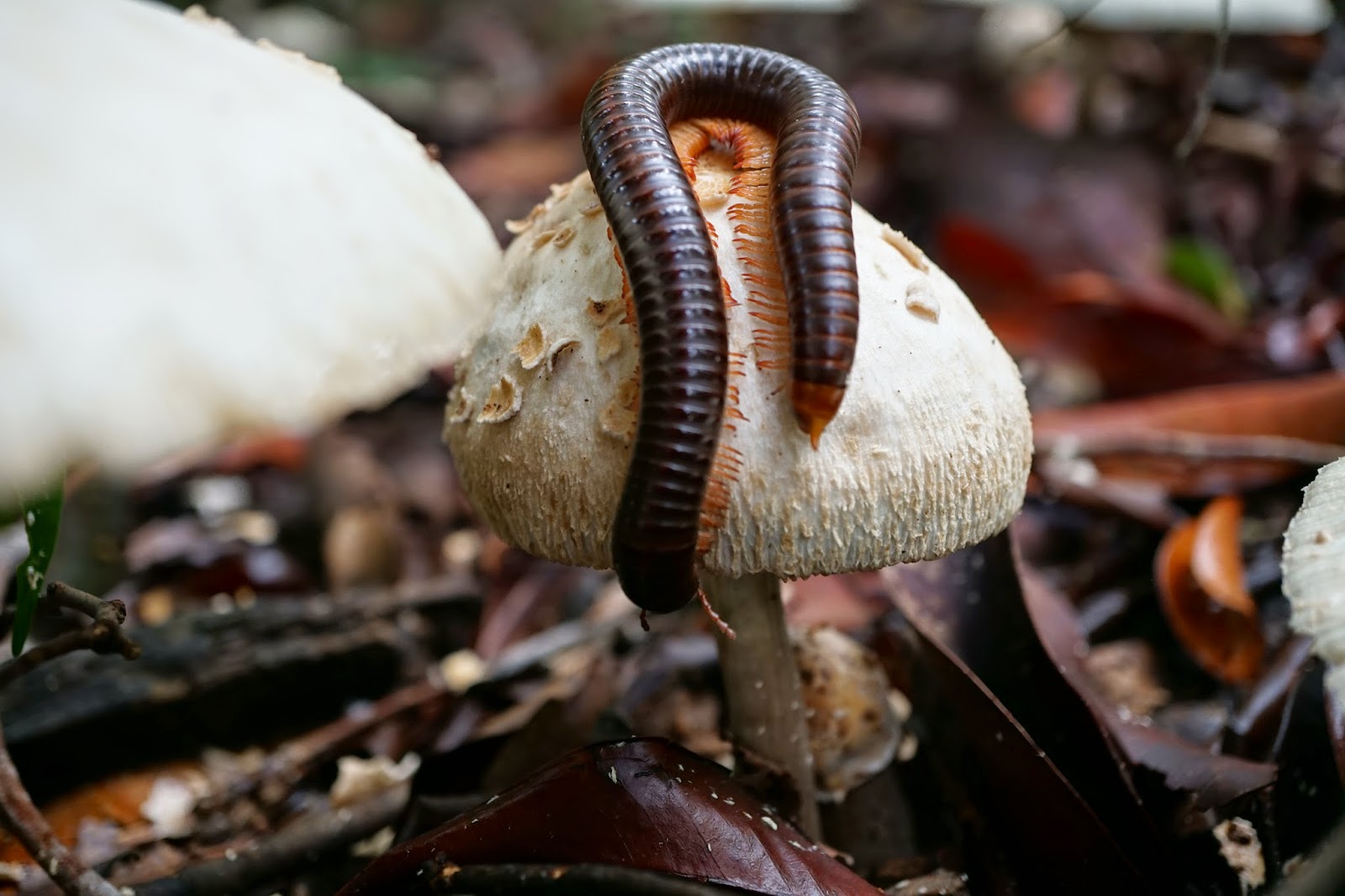 |
| [A harmless giant millipede climbs a large Chlorophyllum] |
The original fungal classification system was based on morphological features, but current DNA-based molecular research methods have caused enormous shifts in mycologists' understandings of what delimits a fungal species and how the taxonomic groups are related. Because most early studies of mycology were conducted in Europe, most species descriptions and identification resources unevenly emphasize European species, and molecular work has made it clear that in many cases applying the name of a similar-looking European species to a collection from another continent is misleading and inaccurate.
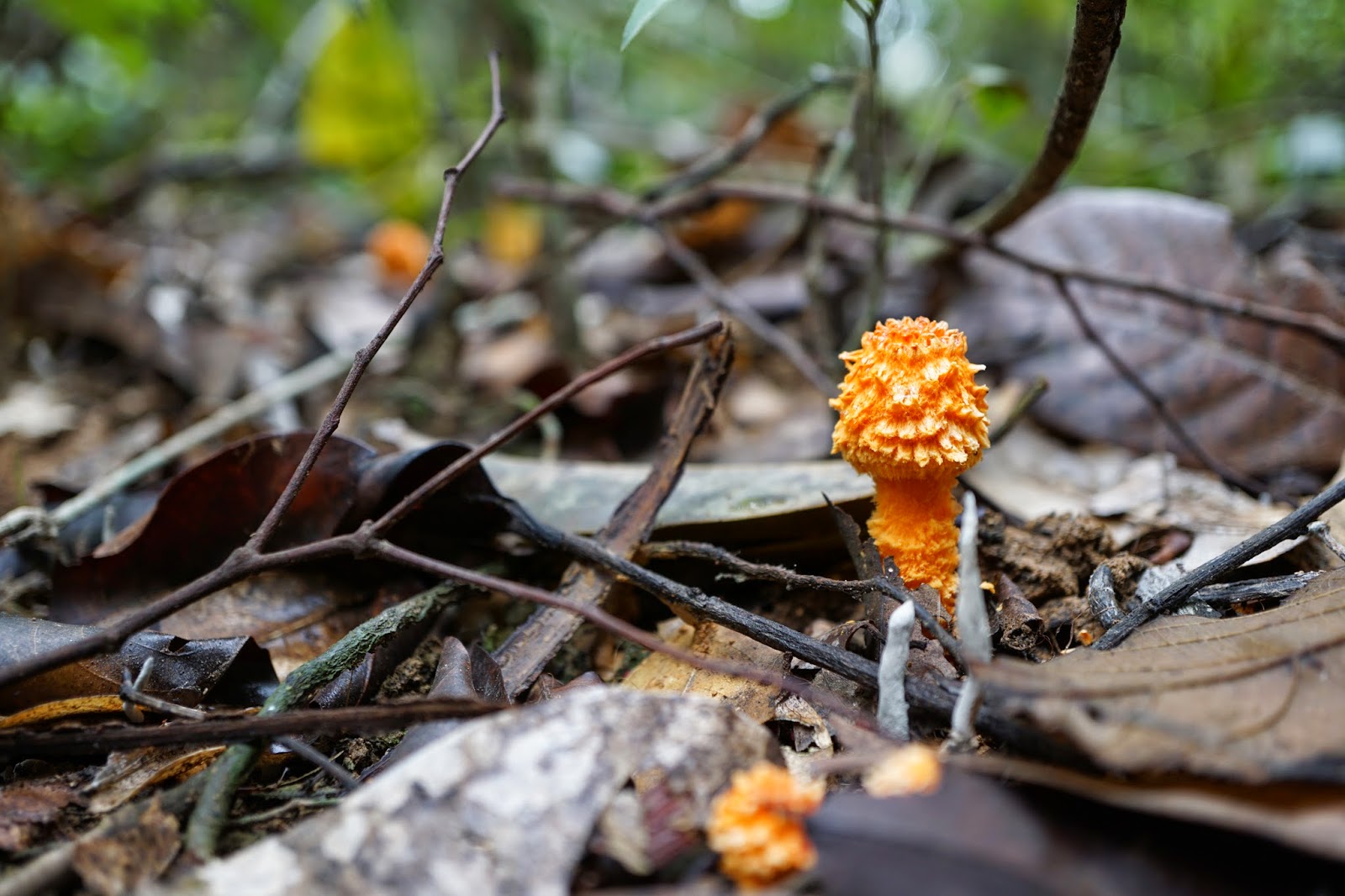 |
| [Bright orange agarics- Cystoagaricus trisulphuratus, or Agaricus crocopeplus?] |
I've noticed in Thailand and Malaysia that what few macrofungal identification resources exist are incomplete and/or inaccurate. This highlights a critical problem in fungal conservation--if the fungi aren't identified correctly or have yet to be formally described, then establishing distribution and identifying which are threatened is virtually impossible. These problems only apply where there has been at least an attempt at surveying the fungal biodiversity, but because of lack of funding, interest, and mycologists, not enough surveying has been done. Some current surveys focus on using only molecular data/DNA sequencing, but the databases that the sequences are referenced against are incomplete/inaccurate and these surveys depend on resources that may not be available in developing countries (particularly in the case of "next generation"/high throughput sequencing).
|
|
[Phillipsia domingensis - a very conspicuous and red disc fungus that was inaccurately given the name Sarcoscypha coccinea in multiple local ID books]
When so many fungi (including the microfungi unrepresented in this post) have not been documented or described, the simplest way to conserve fungi is to maintain undisturbed habitat and continue the efforts to document native fungi. Conservation is a dual act—ideally it includes practical efforts that directly affect the organisms of interest (habitat preservation, culture banking, inoculation of trees with endangered symbiotic species, etc) and it has to change land-use behaviors and educate local people, as human activity is generally accepted as the single largest threat to biodiversity.
|
 |
| [An Austroboletus parasitized by a species of Hypomyces] |
Sakaerat is a UNESCO biosphere reserve consisting of a core area of uninhabited primary forest, with a surrounding buffer zone of restored forests containing a few villages. Briefly, the goal of biosphere reserves is to connect people to their environments with an emphasis on sustainability and conservation. This approach is pretty interesting-- it aims to both conserve habitat and maintain local peoples' stake in the area.
 |
| [Auricularia spp. - appropriately called tree ear. Species of this genus are commonly eaten in Chinese cuisine] |
While reserves by definition are protected from the major land-use changes and tree harvesting that threaten many forests, Sakaerat faces particular challenges because of Thai peoples' traditional use of forest products. In Thailand, people tend to see forests as "free grocery stores," but as human population has increased and forest cover has decreased, forest product use has largely become unsustainable. Resource overuse heavily disturbs habitats, and many sought-after organisms (notably slow-growing trees and slow-reproducing animals) aren't able to maintain reproductive populations. To encourage sustainable use, Sakaerat Environmental Research Station hosts researchers working on projects in the forest, and has very frequent 2-3 day science/nature camps for Thai highschool students that emphasize the value of biodiversity and aim to change the way the next generation of Thais see the forest.
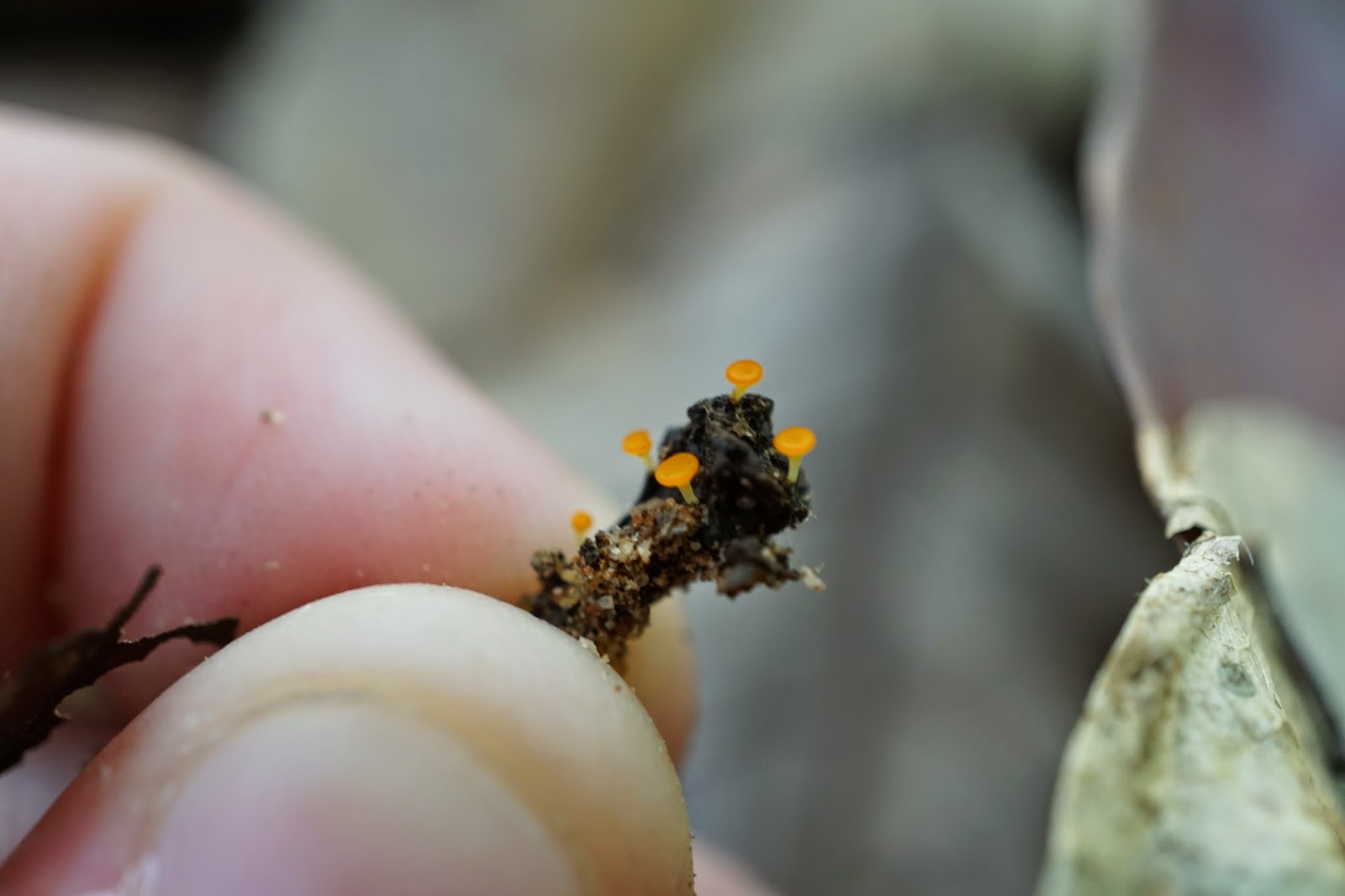 |
| [Tiny orange cup fungus] |
Sakaerat management has largely been able to reduce poaching by relocating villages located in the core region of the forest and maintaining a force of rangers, but mushroom poaching is the notable exception. A week after a heavy rain, there are easily a dozen mushroom vendors with stalls within walking distance of the entrance to the park. There have been conflicting studies on whether or not mushroom harvesting damages fungal populations (as the mushroom is a fruiting body connected to a larger mycelial organism), but undoubtedly heavy harvesting leads to habitat disturbance.
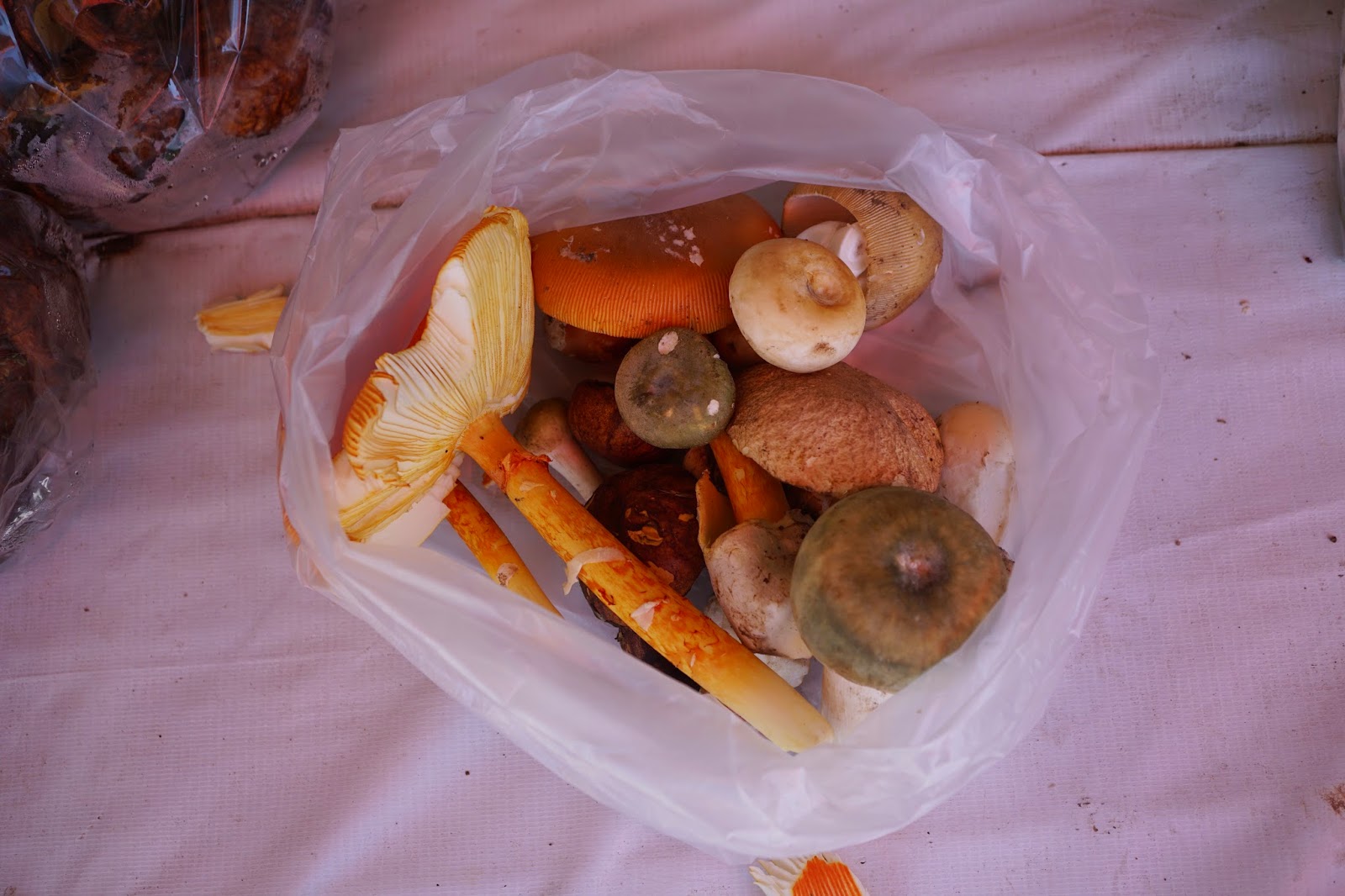 |
| [A shopping bag of mixed wild mushrooms bought from one of many roadside stands -- boletes, Russulas, Amanitas, and more] |
The problem is that it is impossible to stop mushroom poaching unless the poachers have access to an alternative source of income. There
simply aren't enough rangers to prevent poaching by force, and eliminating a
major source of local villagers' income would be a public-relations/local
politics disaster contrary to the idea of maintaining positive
human-environment interaction and including local people in conservation.
 |
| [This batch looks like mostly Amanita] |
Though this observation is based on a single day's trip to the mushroom vendors and may not be representative, the mushroom poachers appeared to be village women in their forties/fifties who specialized in mushrooms. Frustratingly, my grasp of Thai is extremely limited and I couldn't ask them questions about their work, their concerns about the business, or the reliability of mushrooms as a source of income.
 |
| [There was great diversity and abundance of tiny leaf-litter-decaying fungi] |
Sakaerat started a project to educate local people on methods to grow mushrooms and provided spawn/materials in an attempt to turn the poachers into cultivators, but this initiative didn't become self-sustaining before funding fell through. In theory, mushroom cultivation could provide a more stable source of income while reducing mushroom poaching, but until the project is restarted (and there are plans to do so) it is impossible to guess how successful it would be--would consumers discriminate between wild and cultivated species, effectively making two separate markets? it would be a big lifestyle change, are the locals willing to fully adopt cultivation?
 |
| [Tiny, unusual pileal shape, Marasmius sp.?] |
Though mushroom poaching continues for the foreseeable future, the management of Sakaerat recognizes that conservation isn't a solution but a never-ending effort, continued with ongoing research support, constant education efforts, cooperation with local people, and creative solutions to unsustainable resource use.
 |
| [A tree-like form of one of the Xylariales] |
This very brief post on fungal conservation problems and efforts was partly sourced from the 2008 publication Fungal Conservation: Issues and Solutions (Moore, Nauta, Evans, Rotheroe) and discussions with mycologists and Mister Taksin, the Sakaerat forest manager.
Particular thanks to Taksin for welcoming me (unscheduled) to the research station and for managing the biosphere reserve in an exceptional way, and to Alexander for letting me actively join his fungal diversity work in Sakaerat.
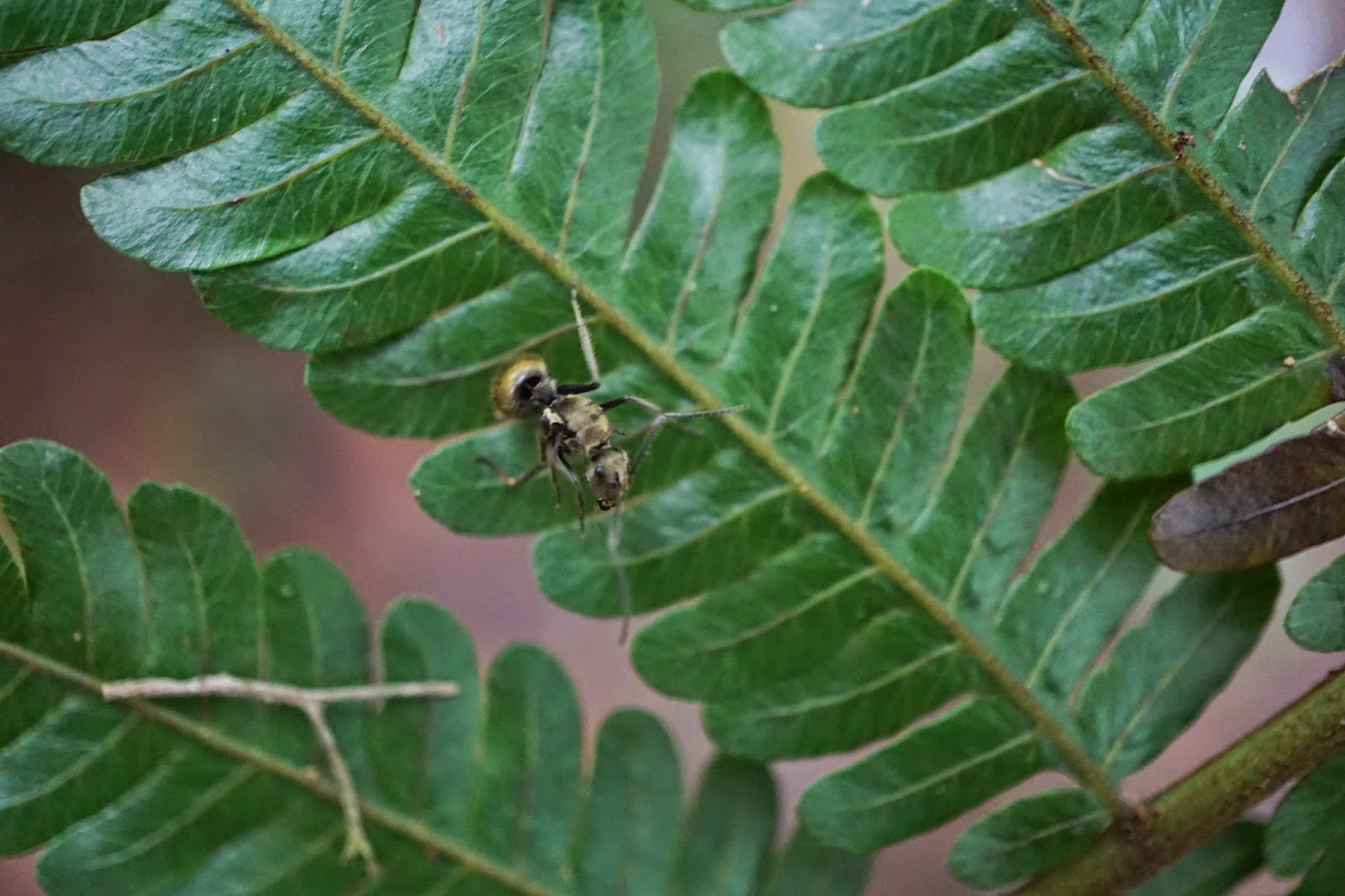 |
| [Sakaerat hosts great insect diversity as well] |
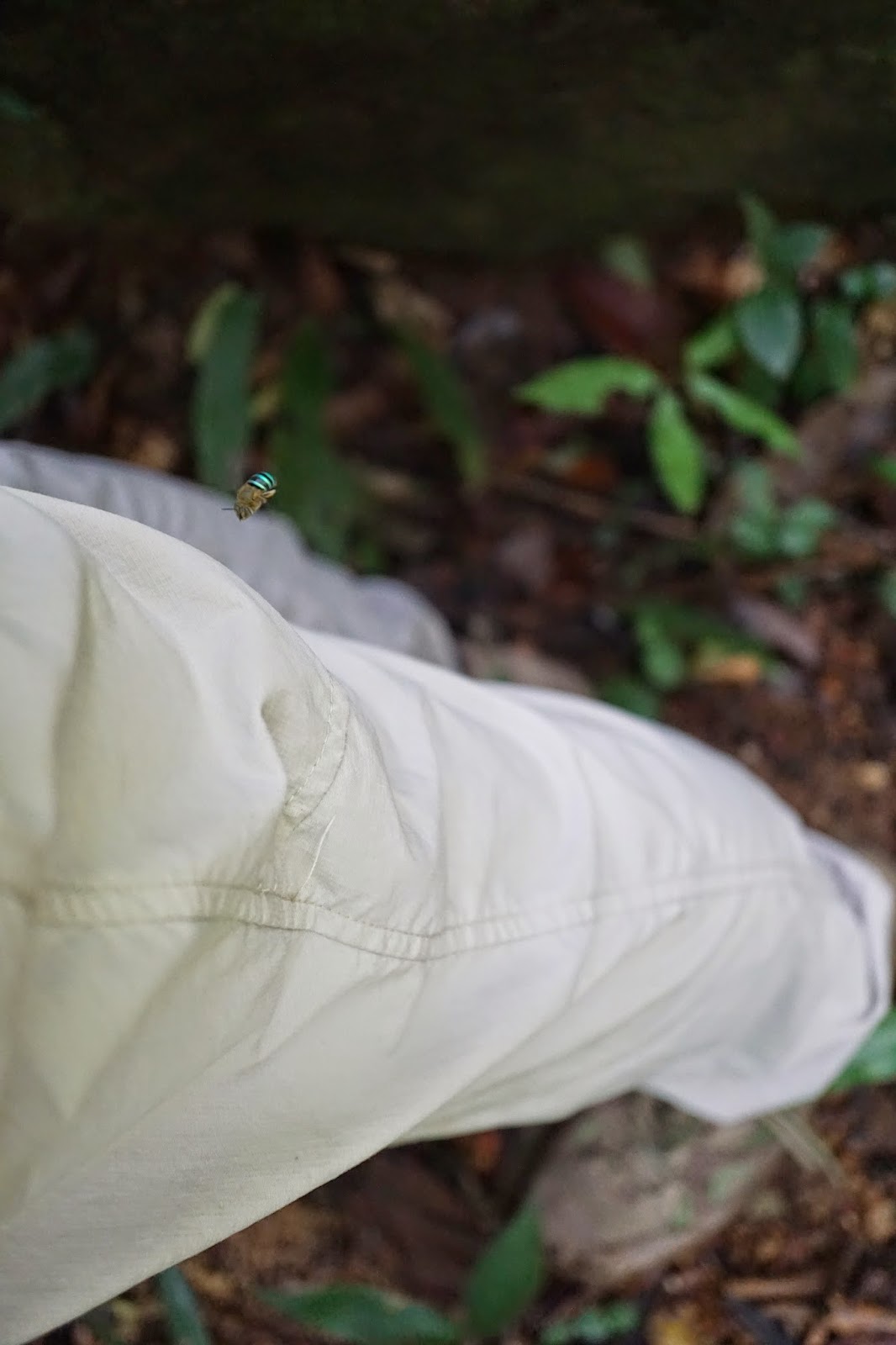 |
| [If you look above my leg, a bee with beautiful blue striping is about to land and drink my sweat.] |
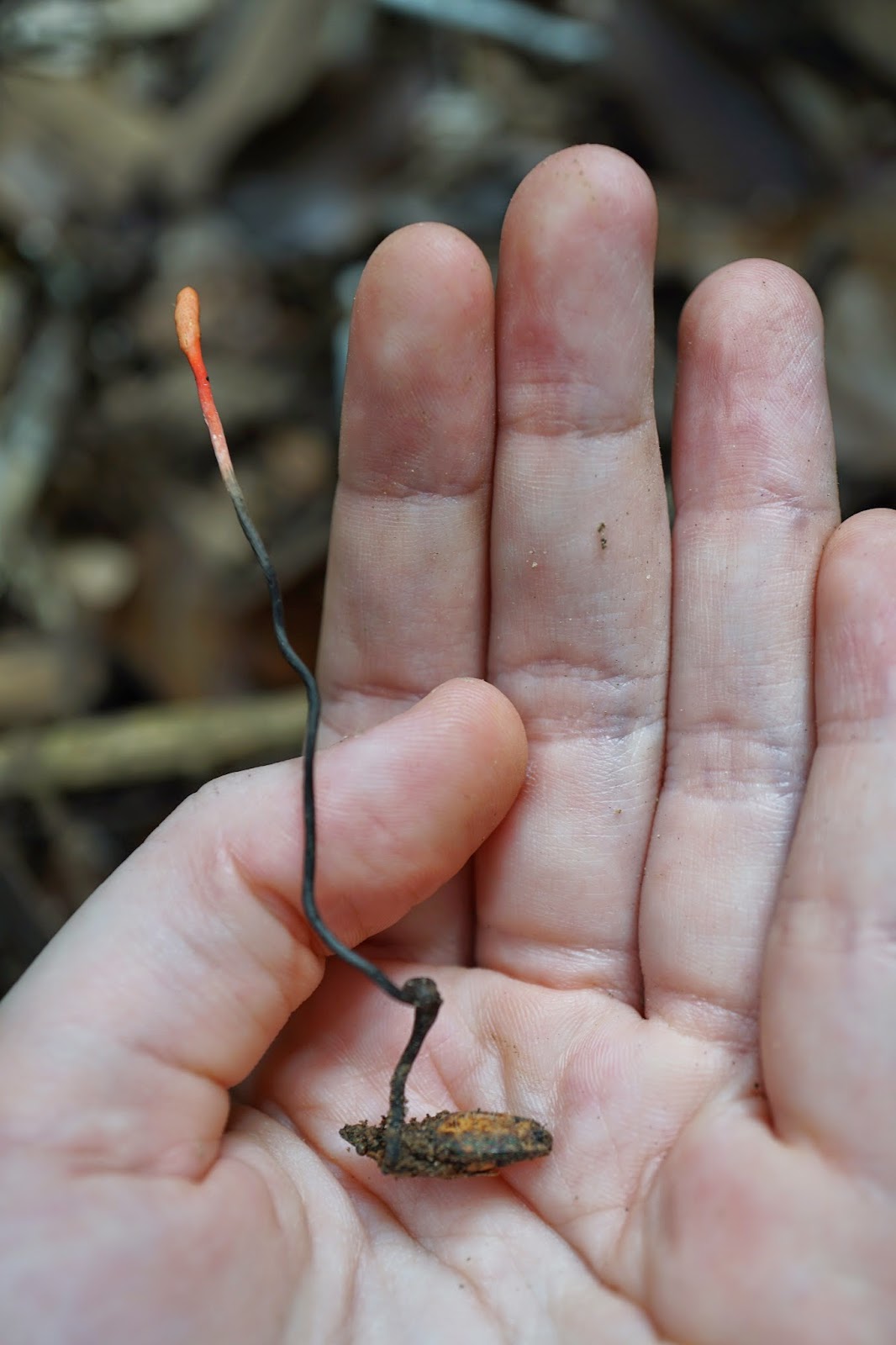 |
| [Insects provide hosts for parasitic fungi, including Ophiocordyceps nutans] |
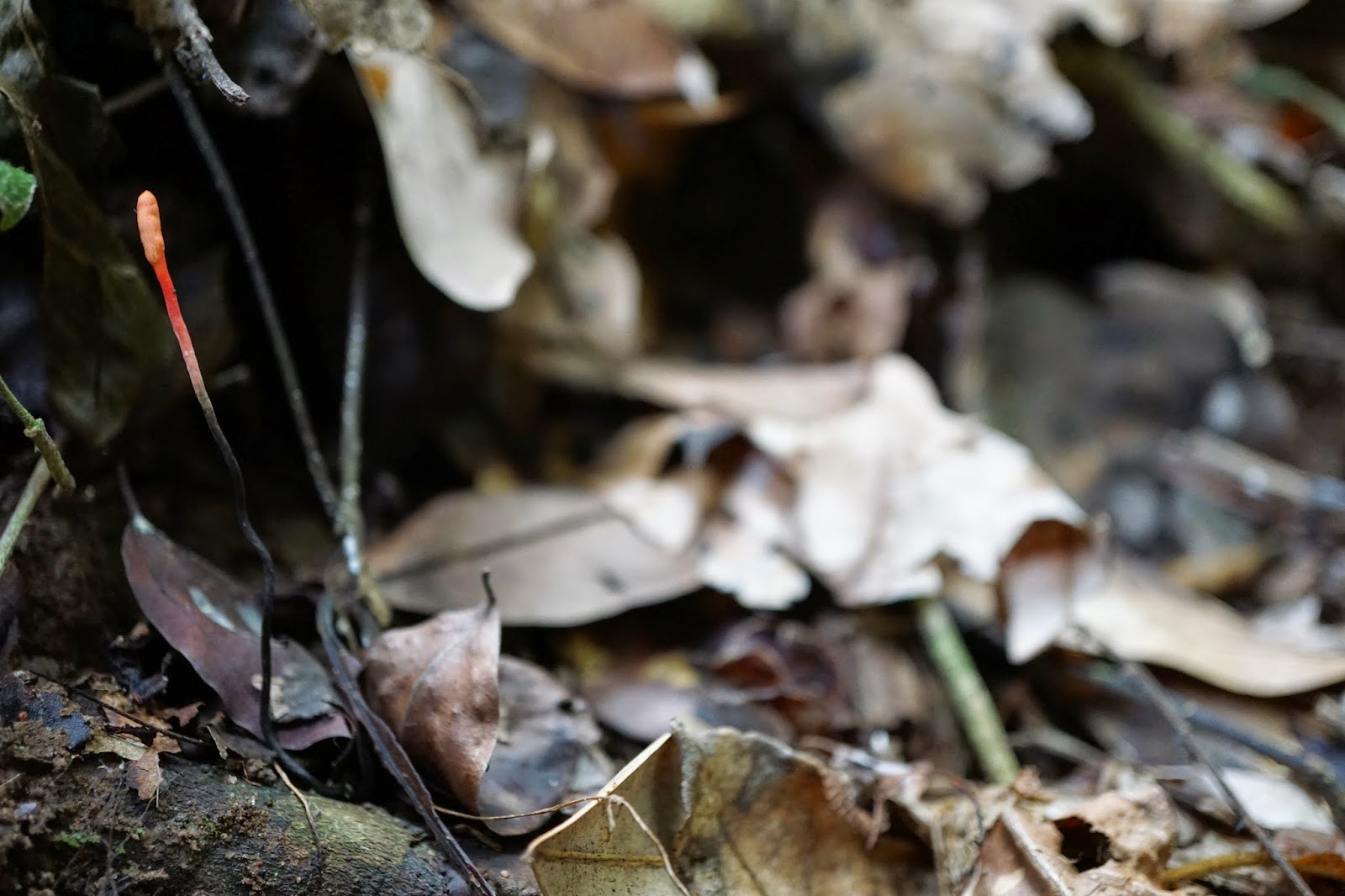 |
| [O. nutans fruiting body poking out of soil. The insect host of the fungus was slightly buried.] |
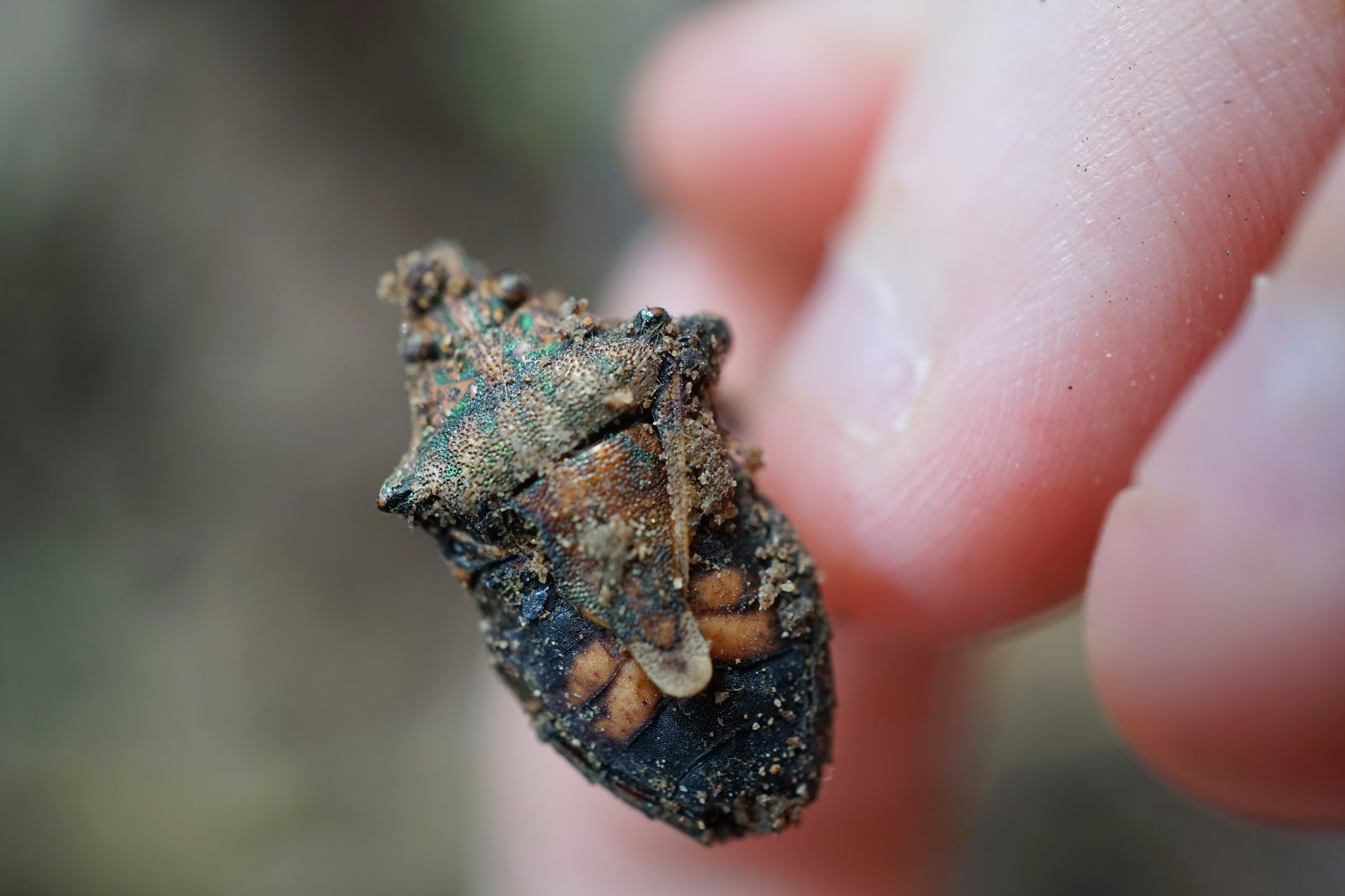 |
| [O. nutans victims are typically stinkbugs (wiki)] |
